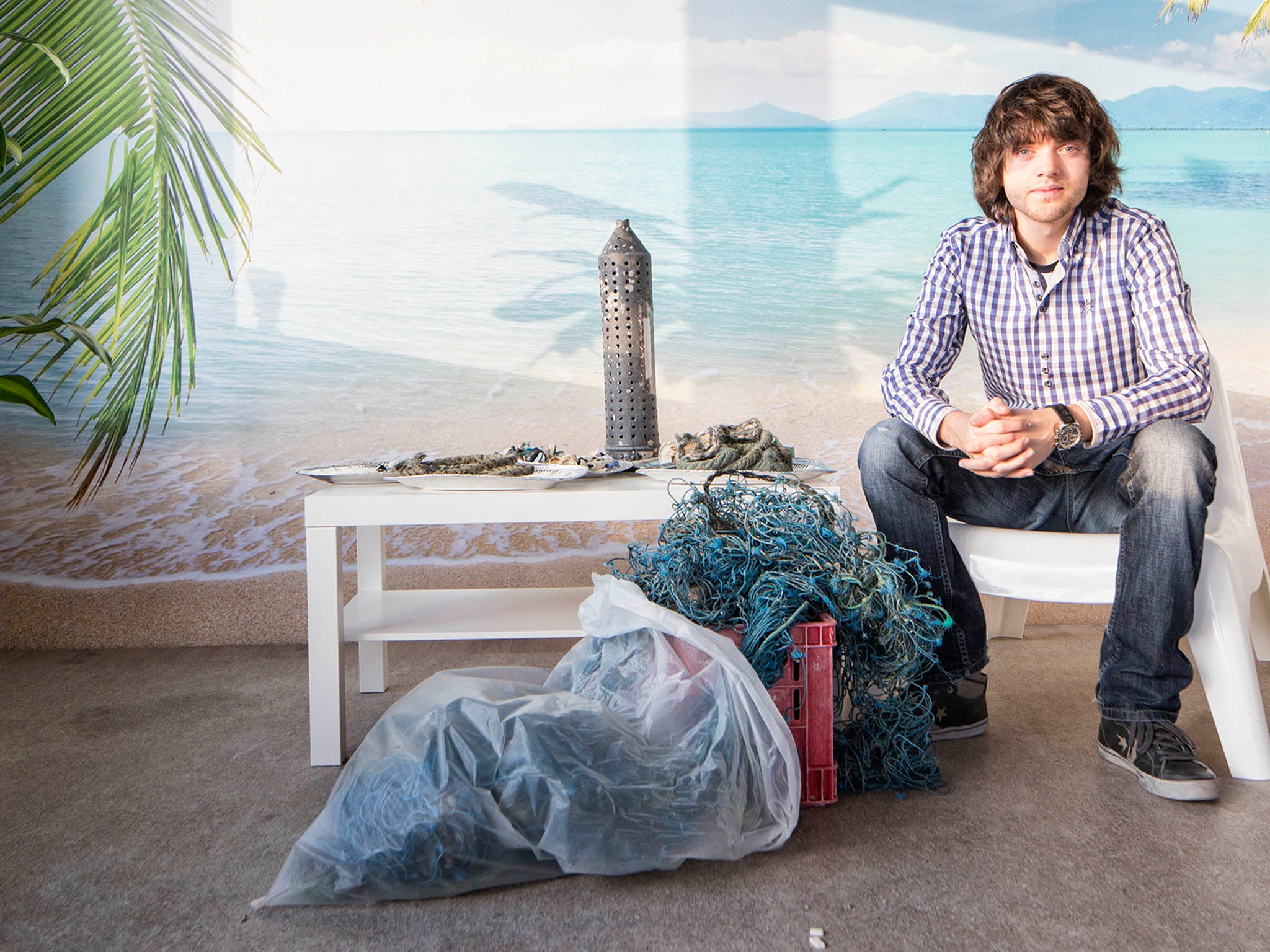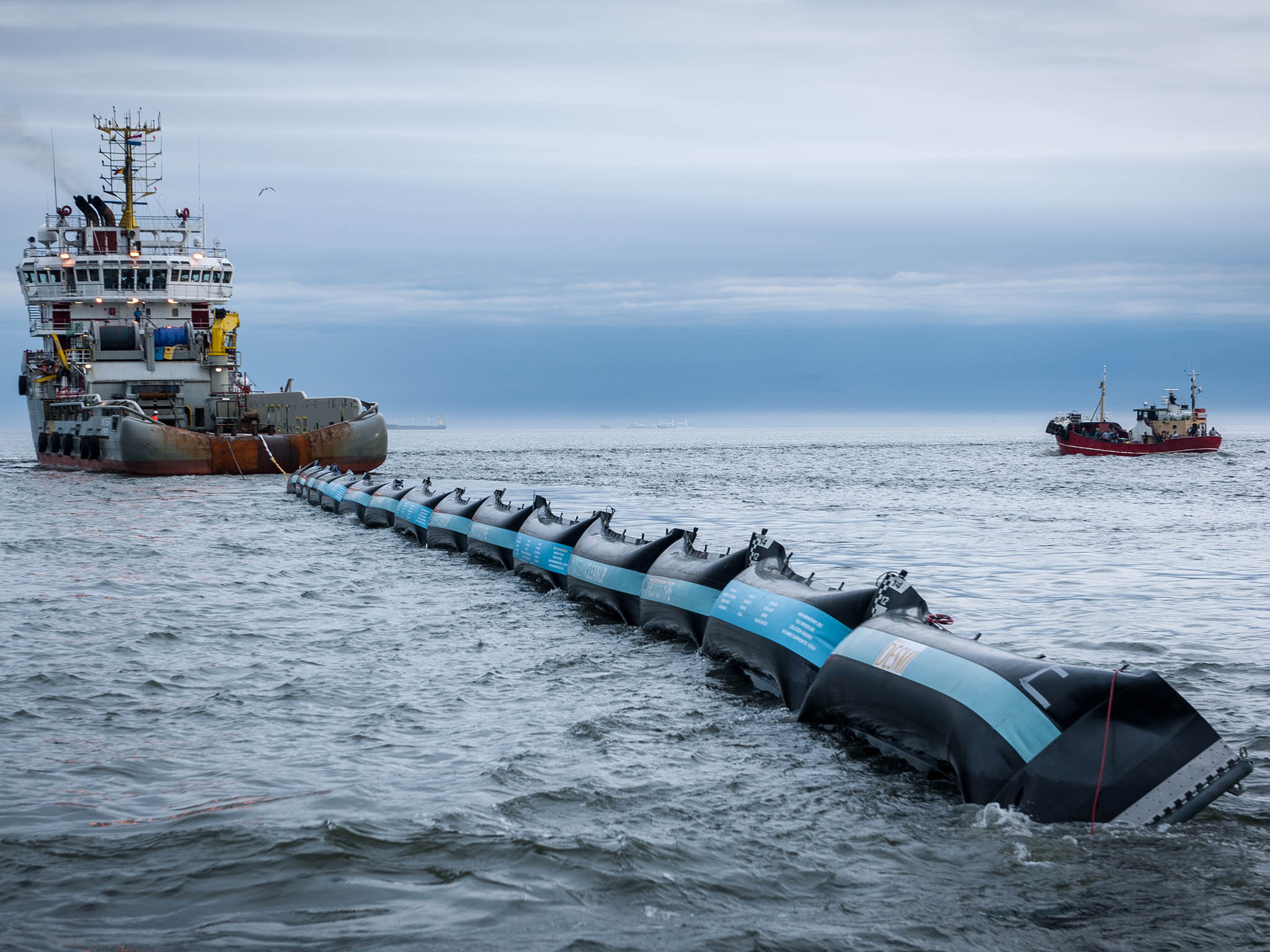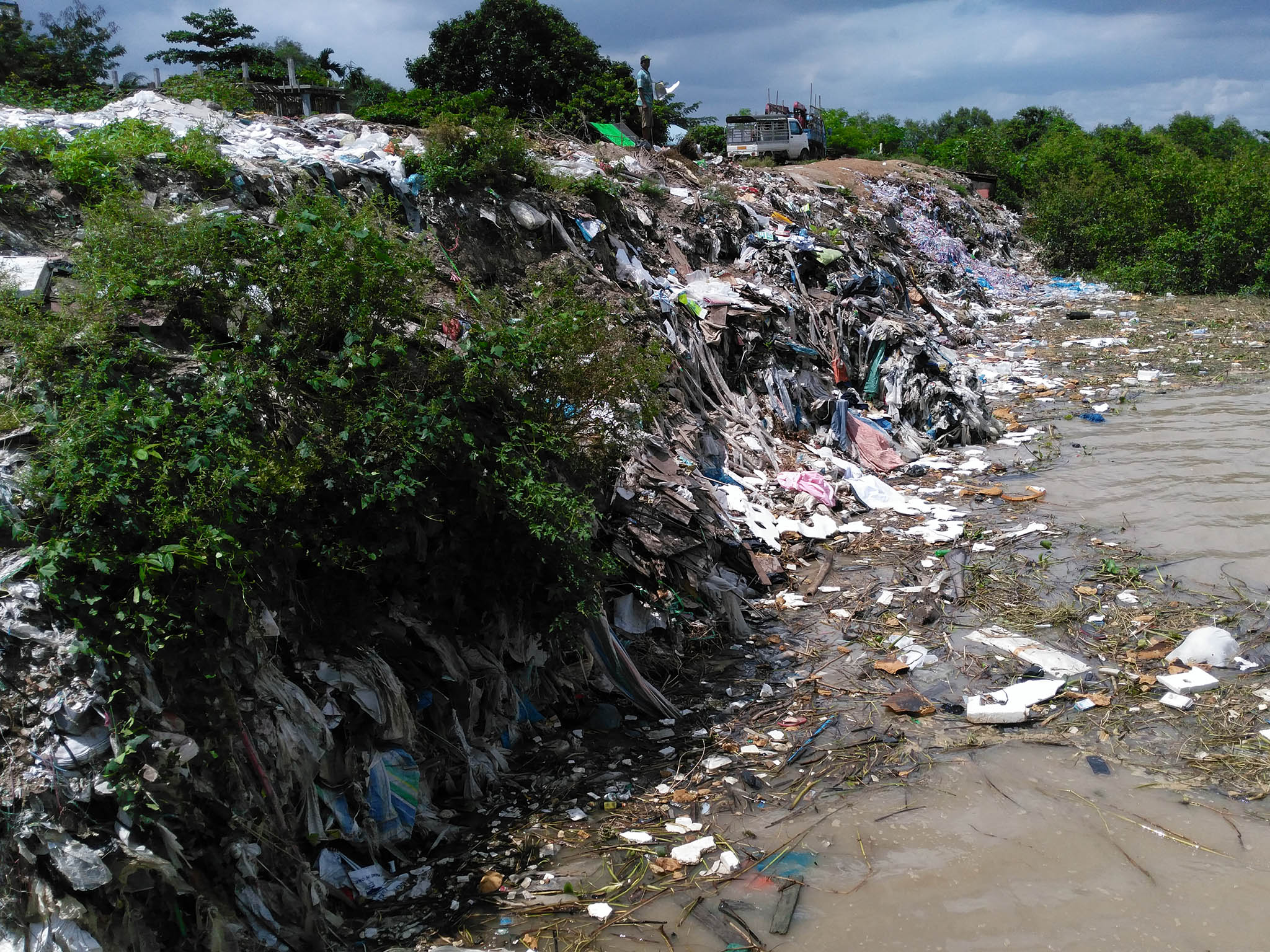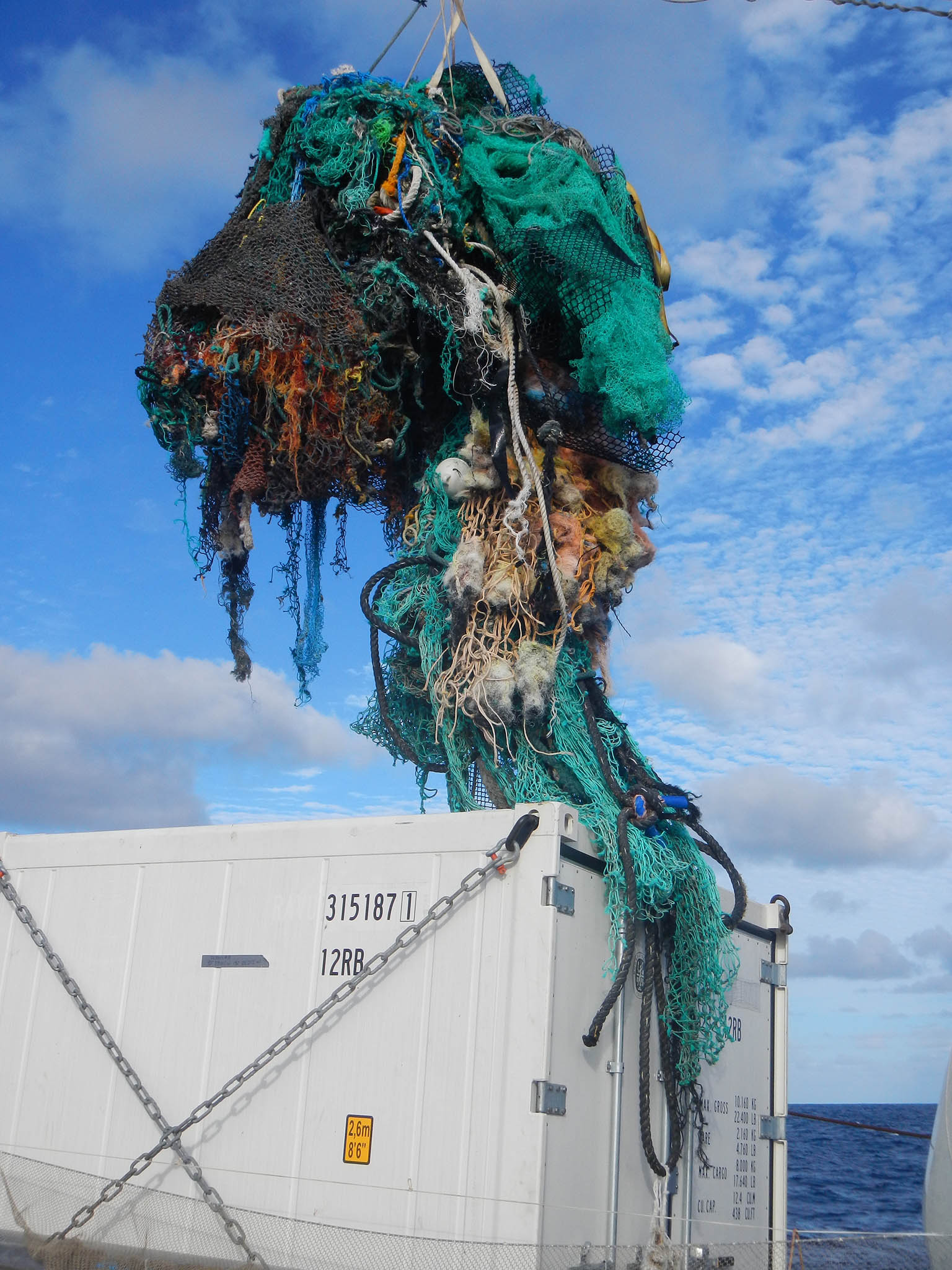Ocean plastic cleanup: A 23-year-old’s mission to take rubbish out of our seas
The biodiversity of the world’s oceans is severely threatened by the dumping of waste at sea, but Boyan Slat might have a solution

Your support helps us to tell the story
From reproductive rights to climate change to Big Tech, The Independent is on the ground when the story is developing. Whether it's investigating the financials of Elon Musk's pro-Trump PAC or producing our latest documentary, 'The A Word', which shines a light on the American women fighting for reproductive rights, we know how important it is to parse out the facts from the messaging.
At such a critical moment in US history, we need reporters on the ground. Your donation allows us to keep sending journalists to speak to both sides of the story.
The Independent is trusted by Americans across the entire political spectrum. And unlike many other quality news outlets, we choose not to lock Americans out of our reporting and analysis with paywalls. We believe quality journalism should be available to everyone, paid for by those who can afford it.
Your support makes all the difference.In 1998 Charles Moore, an oceanographer, was sailing across the North Pacific when he made an unwelcome discovery.
“As I gazed from the deck at the surface of what ought to have been a pristine ocean, I was confronted, as far as the eye could see, with the sight of plastic,” Moore wrote in Natural History magazine.
“It seemed unbelievable but I never found a clear spot. In the week it took to cross the subtropical high, no matter what time of day I looked, plastic debris was floating everywhere – bottles, bottle caps, wrappers, fragments.”
What he stumbled on became known as the Great Pacific Garbage Patch or “Pacific trash vortex”. It is thought to be anywhere between the size of Texas (270,000 sq miles) to several times that size.
The difficulty of measuring such a large area of ocean means exact data is hard to come by but the latest research suggests the vortex has a 386,000 sq mile “heart”, surrounded by a 1.4 million-sq-mile outer periphery of trash. The extent and range of contaminants in the gyre is also little understood but scientists estimate the high-density core now has an alarming one million pieces of plastic per sq km.
Most of the plastic waste that ends up in the oceans is thought to become part of these “garbage patches” of rubbish, but it’s not a doughnut of clearly visible surface rubbish as has often been envisaged.
Some of this plastic matter is found hovering at the waterline but most of it is floating in the upper-water column over thousands of sq miles in the Indian, Pacific and Atlantic oceans.

By some estimates, the ratio of plastic to small animal matter (known as zooplankton) in these gyres is around 6:1 by weight. At the core of the vortex, this can be as high as 48:1. Zooplankton is an important component of the ocean ecosystem, providing nourishment for the smallest fish to the biggest whales, meaning much of the microplastic matter ends up being ingested. Perhaps most alarmingly for people who eat fish on a regular basis, scientists have recently found microplastics in the bodies of fish, not just in their stomachs. Last month, a group of Malaysian and French scientists found 36 pieces of potentially harmful microplastics in a study of 120 mackerel, mullets, anchovies and croakers.
Described as a “ticking time bomb” by marine scientists, the Great Pacific Garbage Patch is believed to have grown by five times in the past 10 years and will become a greater risk to life as the plastic degrades further.
It’s a problem that caught the imagination of a then 16-year-old schoolboy from the Netherlands, Boyan Slat. Slat was on holiday in Greece when a diving trip brought him face-to-face with the problem of ocean plastics.
“I could see more plastic bags than fish on that scuba dive,” he says.
“I had to do a high-school science project that year and I decided to really dedicate myself to this issue. Everybody told me it would be impossible to clean up, the main problem being that the plastic is extremely dispersed... over a wide area.”
He dropped out of a degree in Aeronautical Engineering in order to pursue the idea, but the initial reception was not positive. Slat contacted 300 companies looking for support but only one replied, telling him it was “a terrible idea”.
A hugely popular TED Talk saw the teenage Boyan gain worldwide fame, and funding for his designs soon followed, some of it crowd-funded, and some of it from high-profile investors such as PayPal co-founder Peter Thiel and Salesforce chief executive Marc Benioff.
“Being an outsider and not having worked on this for many years allowed me at least to consider clean-up as an idea that would work. When I started there was this consensus that you could never clean this up, that the problem is way too big, the ocean is way too rough, the issue of bycatch – ‘plastic is too big, plastic is too small’...”
The key idea that makes Slat’s concept different to other schemes is the principle of “letting the sea do the work” by having ocean currents run into V-shaped screens that filter out small plastics. When the system is fully operational, the plastics can then be loaded onto small vessels and taken back to land for recycling.
Today the Ocean Clean Up Foundation employs more than 70 people and has around $30m (£23m) in funding. But the task confronting Slat and his team will require a great deal more than this.
Although it’s hard to gain accurate data, today’s estimates suggest roughly five trillion tonnes of plastics are now floating in our oceans. Seven million tonnes are dumped into the sea each year.

The Ellen MacArthur Foundation estimates that the volume of plastic waste in our oceans will outweigh the total mass of fish in the sea by 2050.
The Ocean Cleanup’s trials in the North Sea with a prototype (officially named “Boomy McBoomFace” after the boom that supports the plastic filtering screens), were promising enough for the team to press ahead with a plan to pilot system in the Pacific gyre next year.
“We suffered some damage but that was the whole point, to find weak spots in the design. We developed a new anchor concept off the back of what we learnt”.
The “drifting array” will now be held down by large sea anchors, ensuring it moves slower than the surrounding currents.
“The deeper you go in the ocean, the slower the currents get. At the surface it can move quite rapidly [16-17 centimetres per second] and only a few hundred metres deeper, it’s more like three or four centimetres per second. So it’s a dramatic difference”.
To exploit this difference, Boyan and his team developed a sea anchor suspended in the water column, consisting of about 100 sq metres of material, enough to slow down the drifting area by 20 per cent.
Having tested a prototype model of its system in the North Sea last year, Th Ocean Cleanup announced in May that it plans to conduct a trial in the Pacific later this year, and start a full cleanup operation there next spring.
“We’re starting with the North Pacific gyre simply because it is the largest accumulation of plastic. A third of all ocean plastic can be found in that area.”
“It will still be an experimental system, operating for one year. We’ll gather data and improve the system continuously”.
The goal then is to move onto the other four ocean gyres and replicate the process, albeit with slightly less rubbish to deal with in each vortex.

“We expect to be ready for a scale-up in late 2019, so in 2019-2020 we expect to get a fleet of around 50 systems in that one patch, which are able to cleanup around 13 per cent of the patch every year. So that means 50 per cent in five years and we would get to 90 per cent in about 20 years.”
I ask Slat what has troubled him the most about the situation facing our oceans.
“Definitely the degradation,” he says. “Plastic doesn’t really go away by itself.”
“The concentration of plastic is rapidly increasing in the gyres. Even if you were to close off the tap, and no more plastic entered the ocean, that plastic would stay there, probably for hundreds of years”.
Not only a threat to sea life, the degradation of ocean plastics leads to the release of chemicals that are known to be harmful to humans when they enter the food chain. Significant debris can cause damage to shipping, foul up tourist sites and encourage invasive species.
Much of our older marine waste is now breaking down into more toxic and hard-to-remove substances, and reaching parts of the sea previously thought to be relatively pristine. Even the deepest chasm on the earth’s surface – the Mariana Trench in the western Pacific ocean – has been found to contain “extraordinary” levels of pollution at depths of 10 kilometres below sea level, although not all of this is attributed to plastic waste.
It is now thought that around four billion plastic microfibres lie on the sea floor.
“Today 95 per cent of the plastic is large stuff and only five per cent is small dangerous microplastics,” says Slat. “What is going to happen over several decades is that microplastic matter may increase twentyfold, which would be quite a big issue.”
Among the other solutions to dealing with ocean plastics is the “waste to wear” initiative run by the NGO Healthy Seas. This project reworks the nylon found in abandoned fishing nets into textiles for use in clothing.
Singer Pharrell Williams and fashion brand G-Star recently collaborated to create a line of clothing called “Raw for the Oceans” which also uses recycled ocean waste.
Picking up litter off a beach may seem like a peripheral activity, but during the 2015 International Coastal Cleanup, around 800,000 volunteers picked up an estimated 18 million pounds of plastic that would otherwise have ended up in the oceans.
Boyan Slat has other plans as to how the foundation can help solve this problem.
“We might work on ways to prevent plastic getting into the ocean in the first place
“We published a study in Nature back in June, showing that 86 per cent of the plastic is coming from Asia, and coming from a relatively small number of rivers in those areas. So, in the future, we could do something there within those river mouths.
“To me that seems like a logical future expansion of what we are doing.”
Join our commenting forum
Join thought-provoking conversations, follow other Independent readers and see their replies
Comments